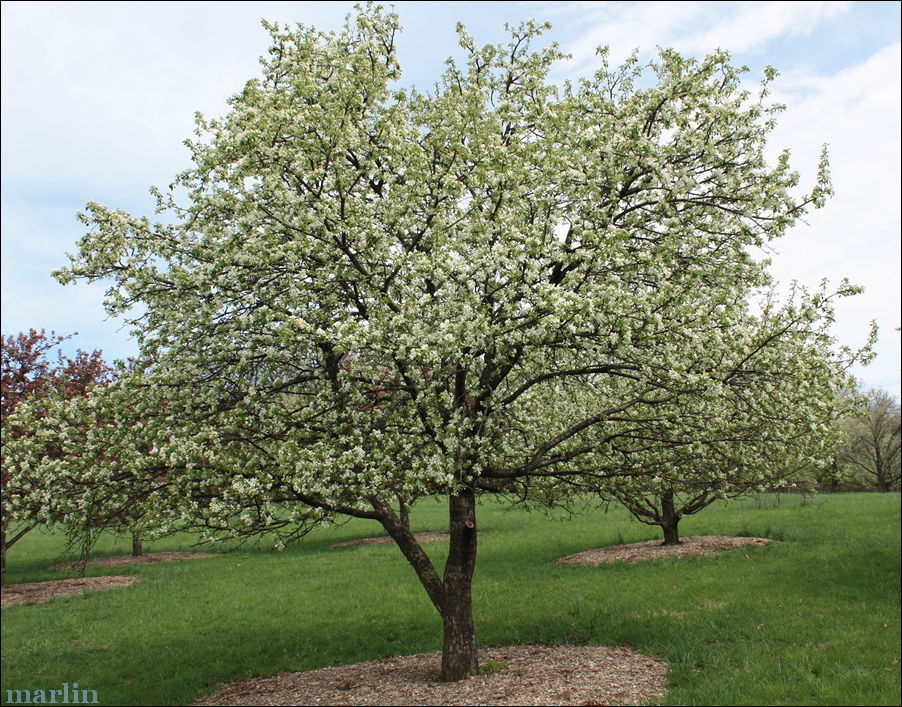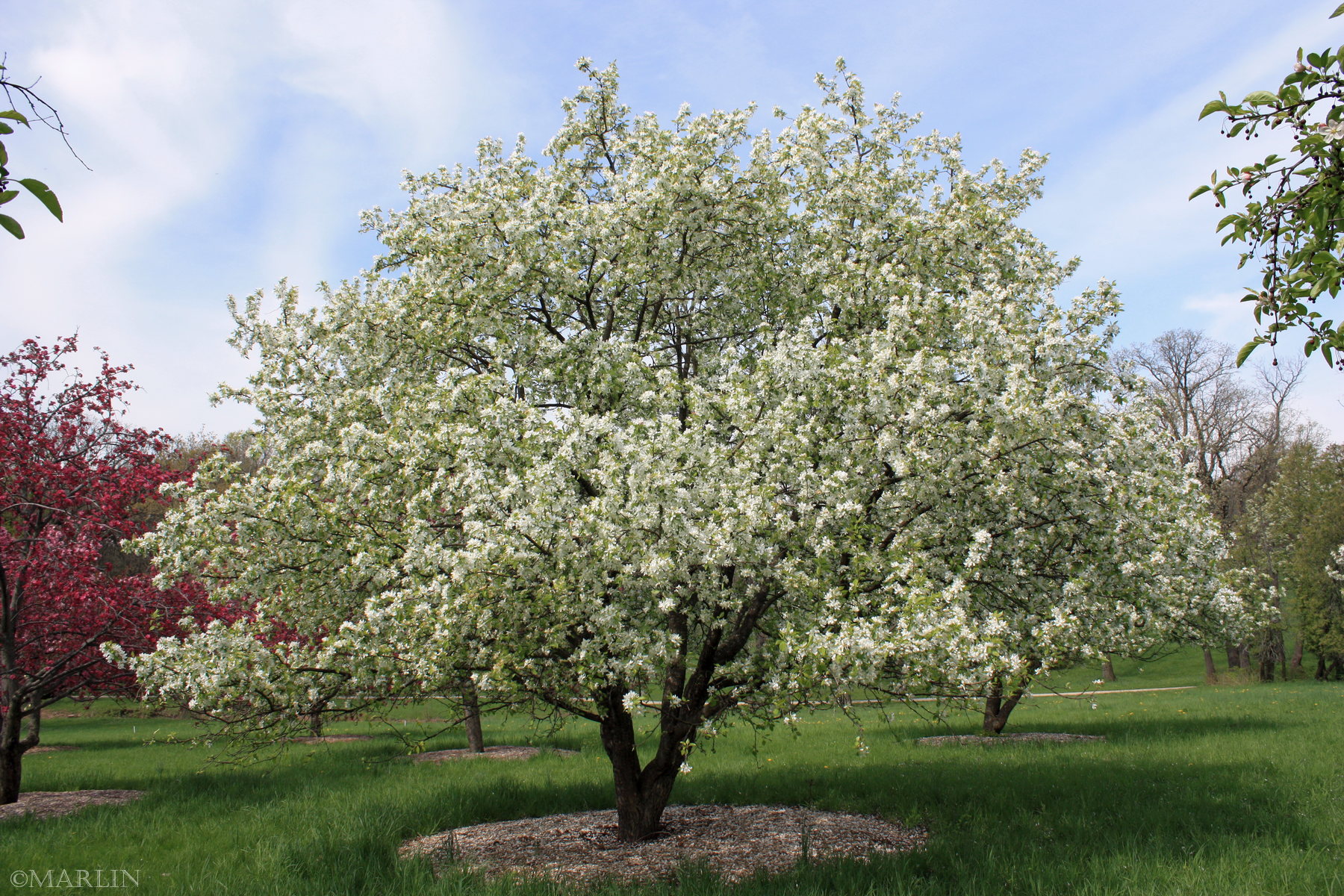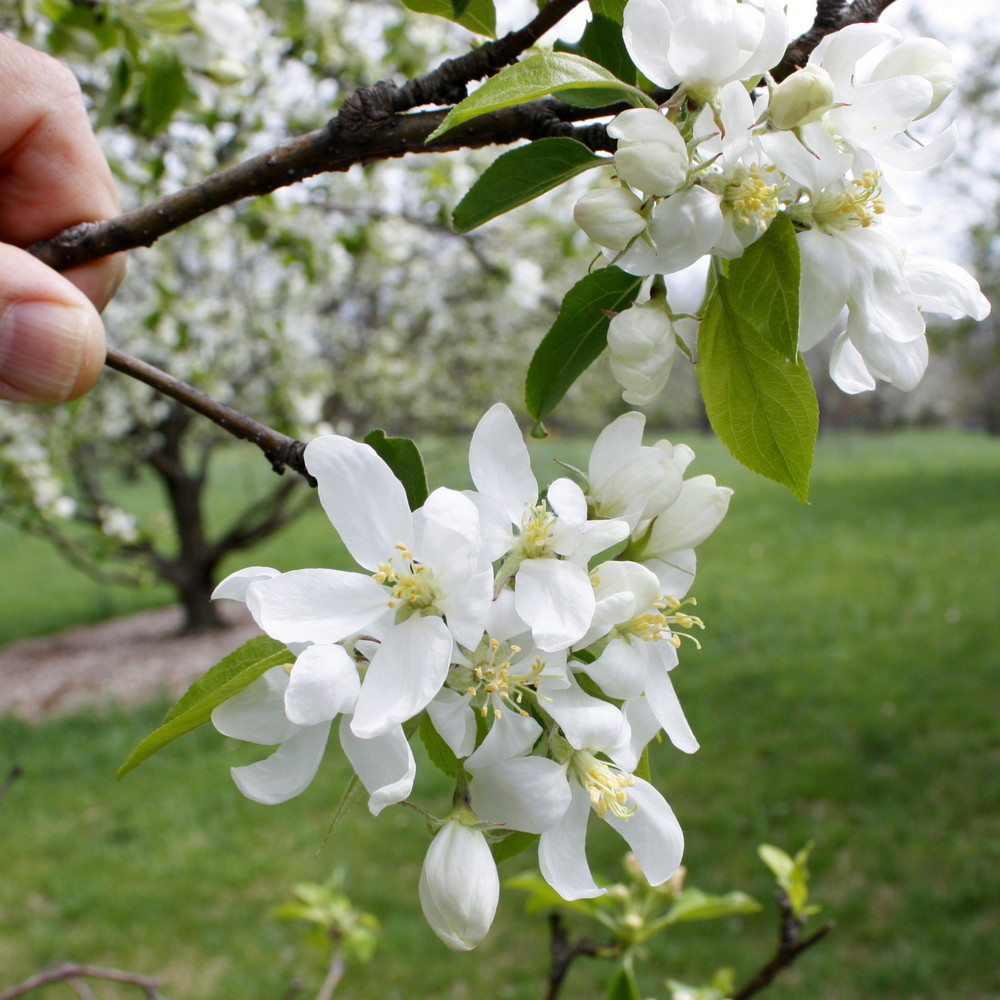Dolgo Crabapple – Malus ‘Dolgo’
Family Rosaceae – Rose Family; Fruit Trees
Dolgo crabapple is particularly resistant to apple scab, and is grown for its large edible fruits.
Dolgo Crabapples are versatile ornamental trees used in the urban landscape. Crabapples bloom in spring, usually in May, bearing flowers that vary a great deal in color, size, fragrance ,and visual appeal. It is common for flower buds to be red, opening to pink or white flowers. The fruit ripens between July and November, and varies in size from 1¼ to 2 inches long or wide. Dolgo crabapple is favored due to its disease resistance.
Dolgo crabapple requires very little pruning but any that is needed should be completed before late spring, to ensure dormant flower buds are not removed. Trees used as street trees should be trained to develop a central trunk and should be occasionally thinned to eliminate water sprouts or crossed-branches, and to open up the crown. This allows for better air circulation through the crown and helps reduce disease.

Dolgo Crabapple, Morton Arboretum acc. 108-84*2 is 25 years old
Crabapples are useful as median trees where the fruit will not fall on pedestrians. Placed in the lawn area as an accent so they receive occasional irrigation, Dolgo crabapple will give you years of wonderful flowers and showy fruit. It is best to locate them away from a patio or other hard surface so the fruits will not cause a mess. Set it back just far enough so the crown will not overhang the walk, but close enough so the flowers and fruit can be enjoyed. Dolgo crabapple grows in moist, well-drained, acid soil in full sun locations for best flowering. They are not recommended for sandy soil due to their inability to tolerate drought, but any other soil is suitable, including some clay.[1]
References
- USDA National Forest Service Fact Sheet 393, Malus x ‘Dolgo’
- Dolgo Crabapple, Morton Arboretum accs. 108-84*1 & 2, photos by Bruce Marlin
- B. L. Teviotdale, UC ANR Publication 7414, Pest Notes “Fire Blight”
- Morton Arboretum, Apple Scab
- Cornell University, “Cedar-apple Rust”
Family Rosaceae – Rose Family; Fruit Trees
Many of these plants are of vital economic importance. The Rosaceae contain a great number of fruit trees of temperate regions, the fruit of which contain vitamins, acids, and sugars and can be used both raw and for making preserves, jam, jelly, candy, wine, brandy, cider and other beverages.
Tree Encyclopedia | Tree Index | Fruit Tree Index

